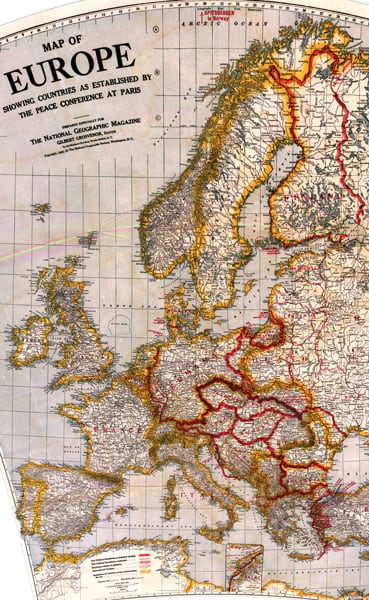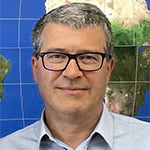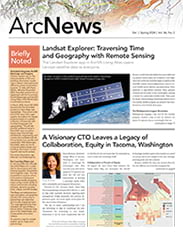I’ve always felt an affinity for maps. This ultimately led me to a career in cartography. As a student, I learned to make maps by literally drawing contour lines, rivers, and streets, and then experimenting with graphic variables to visualize different map objects. This helped me learn to focus on accuracy and precision in mapmaking. However, the results made me aware of the enormous gap between simply drawing lines and polygons and creating visually appealing and well-designed maps that rely on artistic elements, design skills, and a clear focus on user-friendly products.
Many decisions are made in the creation of an effective map. This may not always leave the map user feeling inspired, with a newfound understanding, or with a sense of enjoyment. But maps can be powerful, and they can inspire change. This is often due to a map’s ability to show more than lines and polygons, allowing the user to become emotionally engaged in how the world is depicted.

The magic of good maps is to offer the potential for such emotional engagement. Maps should blend art and cartography to evoke emotions and reactions, igniting a desire to explore the map and examine its details. At the same time, the overall composition should be cohesive and harmonious, immersing the user in the depiction immediately. Often, such maps look clean, ordered, and visually pleasing.
In this respect, illustrative maps offer a much richer form of information presentation compared to many others that I can think of. Ideally, the elements the user is supposed to see are presented clearly while less important elements may be deselected, distorted, or marginalized. The objects and phenomena in the real world that may disrupt the intended story or topic may be completely left out or organized in a structured way with defined placement and boundaries.
Cartography as a discipline is generally concerned with communicating spatial information to human users. In most cases, this is accomplished by applying methods to communicate spatial information by visually perceivable graphical codes such as points, lines, polygons, and symbols that may vary by size, color, shape, or texture. Subsequently, cartographic methods may sacrifice the accuracy, homogeneity, and integrity of processed spatial data to show information that is more easily understandable by humans. Usually this results in representation models—specifically maps—being among the most effective methods of communicating spatial information.
It can be argued that despite our knowledge about map production and modeling, we ultimately are unable to say if a map is “good” in terms of satisfying the needs and demands of a specific user in a given situation and context. This refers to the concept of map quality in a functional sense. Although a map can be well-designed to be easily perceivable, free of graphic conflicts, and effectively communicate spatial information, it may not evoke the same level of satisfaction as another map depicting the same spatial information in a different design.
This can be seen as similar to other communication forms such as spoken human language. Although two people might express something similar, there can be differences in the words they used, how they are used, how they are pronounced, how quickly or slowly they were spoken, who expressed them, and the context of the situation in which they were expressed. These factors all influence whether one communication is more effective and successful than the other.
Ultimately, we may need to expand our understanding of maps as having a variety of functions. Some factors are related to the accuracy and completeness of the data and the information depicted in the map. Other factors pertain to how the data is visualized and graphically depicted (such as clarity and perception), while some are influenced by the user as well as context, such as the map’s visual appeal, engagement, usefulness, and informative qualities.
Maps are designed to help us gain spatial awareness, understand and attract attention, provide illustrative information intuitively, and ultimately instill feelings of satisfaction. This also allows maps to be seen as trustworthy—and, if done properly, effective.


